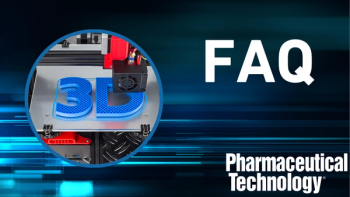
How FDA’s 21st Century Goals Can Be Realized by Using a Multi-Purpose Manufacturing Facility
FDA’s 21st Century goals can be realized by using a multi-purpose manufacturing facility with a flexible design that provides reliable production without extensive regulatory oversight.
Achieving FDA’s goal from its Pharmaceutical Quality for the 21stCentury initiative of “a maximally efficient, agile, flexible pharmaceutical manufacturing sector that reliably produces high-quality drugs without extensive regulatory oversight” is crucial to the biopharmaceutical industry reaching its long-term strategic business goal-efficiently and reliably supplying patients with high quality products (1). Realizing this goal has three primary objectives:
- Flexibility: maximally efficient, agile, flexible manufacturing resulting in the rapid development of a wide variety of challenging new products and assuring delivery of these products to all patients who need them.
- High-quality drugs: typically viewed as assuring performance of all manufacturing operations approaching six-sigma quality levels, or approximately three failures per million operations attempted (1).
- Without extensive regulatory oversight: creating a relationship between regulatory agencies and manufacturing organizations that results in minimal need for regulatory oversight based on past performance.
The multi-purpose facility
The multi-purpose facility (MPF) composed of a matrix of segregated flexible operating spaces described in previous articles is specifically designed to achieve these three objectives (2,3). The ability to accomplish these objectives is the result of the MPF’s capability to use common control strategies to simultaneously operate a wide variety of multi-product processes at different scales and capacities without the need to modify the facility’s layout or control strategies.
A pharmaceutical manufacturing facility can best be described as an enterprise defined by three elements:
- Process: unit operations (UOs), grouping of UOs into logical operating units (LOUs), process equipment, components, instruments, automated process control systems, input and in-process materials, and products.
- Facility: buildings, environmental systems, layouts, operational flows, logistical support, utility systems, and other building control systems such as the building management system (BMS).
- Infrastructure: practices, procedures, people (training, discipline, and qualification), maintenance systems, and automated procedural control systems (e.g., manufacturing execution systems, electronic batch records, etc.) that control the facility and process elements.
The enterprise can be summarized as “the process operating inside the facility under the control of the infrastructure” (4,5).
The conventional approach to building and operating manufacturing facilities is to design the facility and infrastructure elements around the process’s equipment and operating requirements. If the process UOs are implemented in large, fixed stainless-steel (SS) equipment, the process must be integrated into the facility by hard-piped systems. The infrastructure is then planned and assembled specifically to control the integrated process LOUs within the facility, thus creating a unique manufacturing enterprise. In most cases, these one-of-a-kind facilities required extensive regulatory inspection and oversight for approval. Continued evolution of process formats and product technologies makes replicating these enterprises to achieve standard facility designs and infrastructures for new products nearly impossible.
The fundamental goal of the MPF is to separate the process format and scale from the facility and infrastructure elements. Recent advances in process technologies, including movable single-use system (SUS) equipment, combined with significant increases in process productivity from intensification, provide options for decoupling the process UOs and their equipment from the facility and infrastructure (6). The resulting decrease in the size of the process equipment and the availability of movable SUS/SS systems both reduces the size of the facility and increases the flexibility of locating and relocating equipment within the facility’s layout.
Controlling inter-operational risk
One of the most important functions of the facility and infrastructure elements is to control inter-operational risks between products and processes. The presence and severity of these risks can be described by a system risk structure (SRS) (7). The SRS is basically a process flow diagram (PFD) separated by control points between all the process UOs and LOUs connected and operated for material transfer or co-located in the same operating space for the same or a different product. The SRS describes the flow of threats between the UOs for each LOU defined by the PFDs.
An example would be co-located bioreactors. Every operating step (setup, media loading, inoculation, operation, harvest, or clean-up, etc.) is a threat to all the other bioreactors as well as any other UOs within the same operating space. Every interaction threat could produce a risk consequence that must be either accepted based on the existing control strategies or mitigated by an improved control strategy. All the interactions between the UOs, including the bioreactors, must be controlled, including proof of control, in the form of a documented release at a control point for each step in every batch. Depending on the extent of commingling, particularly those seen in large operating spaces (i.e., ballrooms), the threat/risk interactions can require extensive procedural and scheduling control systems that may limit and interfere with operating the processes. The larger the number of UOs in an operating space, the more complex and interactive the infrastructure systems must be to assure and prove control. The MPF uses facility-based segregation to minimize the required infrastructure control systems for controlling interaction risks while maximizing the process’s operating timing options and flexibility.
FDA’s goals (1) are achieved by both the MPF’s flexibility and risk reduction associated with separating the manufacturing process’s scale, implementation, and capacity requirements from the facility’s layout and operating control systems. This approach also allows standardization of the facility’s controls system for manufacturing many different products over their development and launch lifecycle.
The facility and its control systems for each product can be evolved and perfected over the development lifecycle into a high-quality infrastructure necessary for reducing regulatory oversight requirements. Once inspected and used to establish a track record of high-quality manufacturing, an MPF can become a known and trusted facility to regulatory agencies. The MPF’s ability to execute a product’s lifecycle manufacturing requirements allows for product development, clinical, and commercial manufacturing to be efficiently accomplished in a fully integrated operating environment that can reliably develop and launch a wide range of new, high-quality products.
Summary
The three objectives of the 21st Century goal are achieved by:
- Flexibility: The MPF is capable of quickly adapting to a wide variety of different operating scales, capacity requirements, and process formats, including the next generation of intensified continuous processes, without modifying the facility’s layout or infrastructure’s control systems.
- High-quality drugs: Because the MPF can be used over the entire product development lifecycle by a proven facility and infrastructure, the manufacturing process and procedures can evolve using expanded lifecycle process validation; working-quality by design (w-QbD); and ICH Q8-based, well-structured design space methods (8). Tech transfer is essentially eliminated because of the continuity of operating methods and personnel within the integrated MPF environment.
- Without extensive regulatory oversight: Because the facility can be used for many different processes and products without modifying either the facility or infrastructure, regulatory agencies can establish a level of earned trust with the MPF manufacturing enterprise for new products and processes based on successful high-quality performance of previous production campaigns.
The multi-product manufacturing facility provides a method of solving many difficult manufacturing challenges, including supporting “a maximally efficient, agile, flexible pharmaceutical manufacturing sector that reliably produces high-quality drugs without extensive regulatory oversight” (1).
References
1. L.X. Yu and M. Kopcha, Int. J. of Pharmaceutics, 528 (1-2) 354-359 (2017).
2. M. Witcher and H. Silver, Pharm. Tech. 42 (9) 34,38-41 (2018).
3. M. Witcher and H. Silver, Pharm. Tech. 42 (11) 42-45 (2018).
4. M.F. Witcher and J. Odum, Pharm. Engr. 32 (1) 1-8 (2012).
5. M. F. Witcher, “Introduction to Biomanufacturing,” in Process Architecture in Biomanufacturing Facility Design, edited by J. Odum and M. C. Flickinger (John Wiley & Sons, Inc., 2018).
6. J. Odum and M. F. Witcher, “Technology’s Impact on the Biomanufacturing Facility of the Future” in Process Architecture in Biomanufacturing Facility Design, edited by J. Odum and M. C. Flickinger (John Wiley & Sons, Inc., 2018).
7. M.F. Witcher, BioProcessing J.,
8. M.F. Witcher, BioProcessing J.,
About the Author
Mark F. Witcher, PhD is a consultant,
Newsletter
Get the essential updates shaping the future of pharma manufacturing and compliance—subscribe today to Pharmaceutical Technology and never miss a breakthrough.





